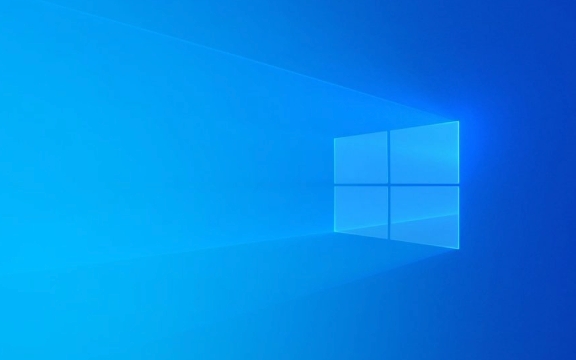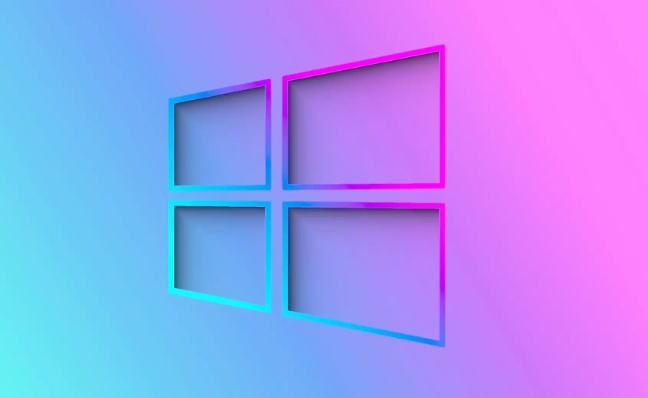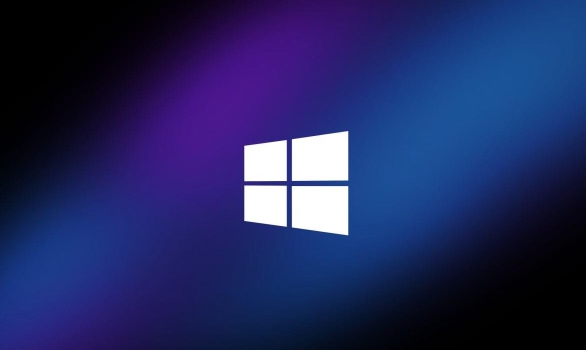Fixed: Windows Is Experiencing High CPU Usage at Idle
Open Task Manager to identify high-CPU processes like System Interrupts, svchost.exe, or Antimalware Service Executable. 2. Address specific culprits: stop or disable Windows Search, add exclusions or schedule scans for Windows Defender, isolate and disable problematic services in svchost such as SysMain, and reset Runtime Broker if spiking. 3. Scan for malware using Windows Security and Malwarebytes, then remove bloatware and disable unnecessary startup apps. 4. Update or roll back drivers, especially for GPU, chipset, Intel Management Engine, or AMD PSP. 5. Adjust power settings to Balanced or Power Saver, set minimum processor state to 5%, and disable background app activity. 6. Disable visual effects for better performance. If issues persist, perform a clean boot to isolate conflicts or use the Media Creation Tool for a repair install, which resolves most idle CPU spikes without data loss.

Windows showing high CPU usage at idle can be frustrating—your system should be nearly idle when you're not actively using it, yet Task Manager shows CPU usage stuck at 20%, 50%, or even higher with no obvious reason. The good news is this is usually fixable. Below are the most common causes and practical solutions to resolve high CPU usage on an idle Windows system.

1. Identify the Culprit Process in Task Manager
Before making system changes, pinpoint what’s using CPU resources.
- Press Ctrl Shift Esc to open Task Manager.
- Go to the Processes tab.
- Click the CPU column header to sort by usage (highest first).
- Look for processes consuming more than 5–10% consistently while idle.
Common high-CPU processes include:

- System Interrupts
- svchost.exe
- Runtime Broker
- Antimalware Service Executable
- Windows Search (SearchIndexer.exe)
- explorer.exe
- Third-party apps (e.g., updaters, cloud sync tools)
? Tip: If the process name isn’t clear, right-click it and select "Search online" to learn more.
2. Fix Common High-CPU Issues
A. Windows Search Indexing (SearchIndexer.exe)
This service can spike CPU after updates or new file changes.

Fix:
- Open Services (press Win R, type
services.msc, hit Enter). - Find Windows Search.
- Right-click → Stop temporarily to see if CPU drops.
- To disable permanently (if you don’t use file search):
- Right-click → Properties → Set Startup type to Disabled.
⚠️ Disabling this means you can't quickly search files in File Explorer.
B. Antimalware Service Executable (MsMpEng.exe)
Part of Windows Defender, this scans files in real time and can spike CPU during scans.
Solutions:
-
Add exclusions in Windows Security:
- Go to Settings > Privacy & Security > Windows Security > Virus & threat protection.
- Under "Virus & threat protection settings," click Manage settings.
- Add folders or processes you trust as exclusions.
- Schedule scans during active hours to avoid idle-time spikes.
- Use third-party antivirus (and Windows Defender will auto-disable).
C. Svchost.exe (Multiple Services in One Process)
Svchost groups system services. High usage might come from:
- Windows Update
- Superfetch (SysMain)
- BITS (Background Intelligent Transfer Service)
To isolate the issue:
- In Task Manager, right-click the high-CPU svchost.exe → Go to Service(s).
- This highlights the specific services involved.
- Research or temporarily stop non-critical services via Services app.
Example fix – Disable SysMain (formerly Superfetch):
- Open services.msc.
- Find SysMain.
- Right-click → Properties → Set Startup type to Disabled → Apply.
Many users report significant CPU reduction after disabling SysMain, especially on SSDs.
D. Runtime Broker
Usually uses
Fix:
- Open Settings > Apps > Startup and disable unnecessary apps.
- Or reset via:
- Task Manager → Runtime Broker → End Task (it restarts automatically).
3. Check for Malware and Bloatware
Even clean-looking systems can run hidden miners or adware.
Steps:
- Run a full scan with Windows Security.
- Use Malwarebytes Free for a second opinion.
- Uninstall unused software via Settings > Apps > Installed apps.
- Disable startup bloat: Task Manager > Startup tab → disable unnecessary entries.
4. Update or Roll Back Drivers
Outdated or faulty drivers (especially GPU or chipset) can cause high CPU usage.
Do this:
- Press Win X → Device Manager.
- Check Display adapters, System devices, and Processors.
- Right-click devices → Update driver.
- If the issue started recently, try Roll Back Driver.
Especially check for Intel Management Engine, AMD PSP, or NVIDIA drivers.
5. Power Plan and Background Apps
Power settings can prevent CPU from downclocking.
Fix:
- Go to Control Panel > Hardware and Sound > Power Options.
- Select Balanced or Power Saver.
- Click Change plan settings > Change advanced power settings.
- Expand Processor power management → Set Minimum processor state to 5% (on battery or plugged in).
- Set System cooling policy to Passive.
Also:
- Settings > Privacy & Security > Background apps → Turn off background activity for non-essential apps.
6. Disable Visual Effects (Minor Impact, But Helps)
Reducing graphical load can free up CPU cycles.
- Press Win S, type "performance", choose Adjust the appearance and performance of Windows.
- Select Adjust for best performance or manually disable animations.
Final Checks
If nothing works:
-
Clean boot to rule out software conflicts:
- Press Win R, type
msconfig, hit Enter. - Under Services, check Hide all Microsoft services, then Disable all.
- Go to Startup tab → Open Task Manager → disable all startup items.
- Restart. If CPU is normal, re-enable items gradually to find the culprit.
- Press Win R, type
Consider a Windows repair install (in-place upgrade) using the Media Creation Tool—keeps files and apps but refreshes system files.
High CPU at idle isn't normal, but it's rarely a hardware issue. Most cases come down to background services, updates, or misbehaving apps. By methodically checking processes and adjusting settings, you can restore your system to quiet, efficient operation.
Basically, start with Task Manager, stop what’s hogging resources, and work backward. It’s not complex—just requires a bit of patience.
The above is the detailed content of Fixed: Windows Is Experiencing High CPU Usage at Idle. For more information, please follow other related articles on the PHP Chinese website!

Hot AI Tools

Undress AI Tool
Undress images for free

Undresser.AI Undress
AI-powered app for creating realistic nude photos

AI Clothes Remover
Online AI tool for removing clothes from photos.

Clothoff.io
AI clothes remover

Video Face Swap
Swap faces in any video effortlessly with our completely free AI face swap tool!

Hot Article

Hot Tools

Notepad++7.3.1
Easy-to-use and free code editor

SublimeText3 Chinese version
Chinese version, very easy to use

Zend Studio 13.0.1
Powerful PHP integrated development environment

Dreamweaver CS6
Visual web development tools

SublimeText3 Mac version
God-level code editing software (SublimeText3)
 How to Change ChatGPT Personality in Settings (Cynic, Robot, Listener, Nerd)
Aug 08, 2025 am 09:33 AM
How to Change ChatGPT Personality in Settings (Cynic, Robot, Listener, Nerd)
Aug 08, 2025 am 09:33 AM
Visit our disclosure page to learn how you can support MSPoweruser in maintaining the editorial team Read moreWant ChatGPT to reflect your mood or communication style? With the launch of ChatGPT 5, OpenAI introduces five distinct personalities – choo
 How to change the system display language for all users in Windows
Jul 31, 2025 am 08:18 AM
How to change the system display language for all users in Windows
Jul 31, 2025 am 08:18 AM
InstallthedesiredlanguagepackviaSettings→Time&Language→Language®ion,ensuring"SetasmyWindowsdisplaylanguage"isselected.2.Changethesystemdisplaylanguageinthesamemenuandrestart.3.OpenControlPanel→Region→Administrativetab,click"
 How to manage notifications and actions in Windows
Aug 15, 2025 am 11:31 AM
How to manage notifications and actions in Windows
Aug 15, 2025 am 11:31 AM
You can manage notifications and actions in Windows through settings to stay focused and track important reminders. 1. Open "Settings" (Win I), enter "System>Notifications", and you can turn off notifications globally or manage notification permissions one by one, including banners, sounds and lock screen displays. 2. Select "Off", "Priority Only" or "Alarm Only" mode in "Focus Assist", and customize the priority apps and contacts. You can also set the automatic activation time or turn it on when projecting screens or playing games. 3. Open the Operation Center (Windows10) or Notification Center (Windows11) through the taskbar icon or swipe right, and clear all or individual notifications, and edit common shortcut buttons in "Quick Action". 4. Other prompts include closing notifications
 How to use the wevtutil command to manage event logs in Windows
Jul 30, 2025 am 05:03 AM
How to use the wevtutil command to manage event logs in Windows
Jul 30, 2025 am 05:03 AM
TheweVTUTILCommandisusususususedtowseventlogsviamandline.2.Tolistalllogs, Usewevtutilel; Togetdetailsaboutaficloglik Esystem, Usewevtuttutlglsystem.3.CeryEVENTWITHWEVTUTILQE, Search Aswevtutilqesystem/Count: 10/F: Text Forthelast10 Evest text format,
 How to manage AppLocker policies in Windows
Aug 02, 2025 am 12:13 AM
How to manage AppLocker policies in Windows
Aug 02, 2025 am 12:13 AM
EnableAppLockerviaGroupPolicybyopeninggpedit.msc,navigatingtoApplicationControlPolicies,creatingdefaultrules,andconfiguringruletypes;2.Createcustomrulesusingpublisher,path,orhashconditions,preferringpublisherrulesforsecurityandflexibility;3.Testrules
 How to fix a '0x800f0954' error when installing optional features in Windows
Aug 05, 2025 am 09:30 AM
How to fix a '0x800f0954' error when installing optional features in Windows
Aug 05, 2025 am 09:30 AM
First, run Windows Update troubleshooter to automatically repair common problems, 1. Run Windows Update troubleshooter; 2. Check network connection and proxy settings to ensure that you can access the Windows Update Server; 3. Use DISM command to repair component storage, and specify the local Windows ISO source if necessary; 4. Manually specify the ISO source path when installing optional functions through PowerShell; 5. Reset Windows Update component services and clear cache; 6. Run sfc/scannow and chkdsk to check system and disk errors; finally ensure that the system is updated to the latest and use official ISO first to solve the problem of missing files, and in most cases, you can successfully repair 0x800f0954 errors
 Windows permanently stops system update
Aug 12, 2025 pm 08:24 PM
Windows permanently stops system update
Aug 12, 2025 pm 08:24 PM
Permanently stop Windows system updates: Use the Group Policy Editor: Double-click "Auto Update" settings and select "Disabled". Using the Registry Editor: Set the data value of "NoAutoUpdate" to "1". Advantages: Completely stop future updates and free up storage space. Disadvantages: Increased security risks, loss of functions, and incompatibility problems. Note: Use only after understanding the risks, you will be responsible for the consequences.
 How to fix 'The audio service is not running' in Windows
Aug 08, 2025 am 09:52 AM
How to fix 'The audio service is not running' in Windows
Aug 08, 2025 am 09:52 AM
RestarttheWindowsAudioservicebysettingitsstartuptypetoAutomaticandstartingitinServices,andensureWindowsAudioEndpointBuilderisalsorunning;2.Runthebuilt-inAudioTroubleshooterviaSettings>System>Soundtoautomaticallyfixcommonissues;3.Reinstallorupda







